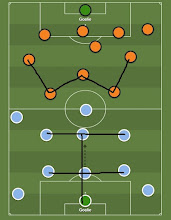The recommendation to lessen the number of heading in football games to reduce the risk of dementia appears to be easier said than done.
Concerns about the impact of headers in football have grown
since the departure of former England internationals from the 1966 World Cup
squad, Nobby Stiles, in 2020. He was diagnosed with dementia, which was linked
to the repeated headings. Stiles' teammates in the Three Lions squad, including
Martin Peters, Ray Wilson, the former Republic of Ireland manager, Jack
Charlton, and his younger brother, Bobby Charlton, who died in October 2023,
reportedly shared the same neurodegenerative condition.
The Potential Risk
Such tendency has been supported
by the date from further study and research. During an interview with Sky
Sports, Dr. Willie Stewart, Honorary Clinical Associate Professor at the
University of Glasgow and the study's lead expert, expressed his concern. He claimed that footballers were 3.5 times more likely than the general population to die from brain disease, and that replacing the modern ball with a faster-moving one, as compared to the ball in 1976, could arguably make it worse.
The data appears to corroborate
the findings of a 2019 PFA (Professional Football Association) charity-funded
study on FIELD (Football's Influence on Lifelong Health and Dementia risk),
which found that footballers had a 3.5 times higher death rate from
neurodegenerative conditions than the general population.
As a result, the less heading in
football has been proposed. Dr. Stewart believed that an immediate change was
required at all levels, including modifying training by reducing any unnecessary
heading, reducing all of it in youth football, and conducting additional
research into any head injuries in the professional game. Based on the evidence available, PFA chairman
Ben Purkiss has urged the football authorities to intervene.
Possible or Not?
The question of whether it is
possible to reduce the heading in the match, whether for scoring goals,
providing assists, or clearing, remains unanswered. It is unclear when any
football governing bodies will impose a new regulation for it. Surprisingly,
there has already been interesting development at the top level.
The average number of headers per
game in the major European leagues is higher in the English Premier League and
German Bundesliga than in the Italian Serie A, French Ligue 1 and Spanish La
Liga. However, the numbers appear to be decreasing in all of the top flights except La Liga.
This shift may be related to the
tactical trend in Spain's top flight, where more teams are using longer passes
and relying more on physical duels rather than technical skills and creativity.
These are diametrically opposed to the nature of Latin football.
The success of Atletico Madrid
under Diego Simeone in the past decade by winning two league titles (2014 and
2021) , two UEFA Champions League runners-up (2014 and 2016) as well as two
Europa League and UEFA Super Cup trophies (2012 and 2018) might be inspiring more teams to follow
their footsteps. Their playing style and even formations have grown in
popularity, particularly among mid and lower table teams lacking marquee
signings. Athletic Bilbao, Valencia, Villarreal and Getafe are some of the
examples.
In summary, there may have been
some awareness in modern football regarding the brain injury issue as a long
term impact on headings, at least at the European major leagues, which could
lead to a gradual adjustment. Nevertheless, an official game rule to reduce
header is still necessary for the sake of the players' health. After all, with
less heading on the pitch, players and teams will be forced to be more creative
and improve their technical abilities rather than emphasising physical duels.


Comments
Post a Comment